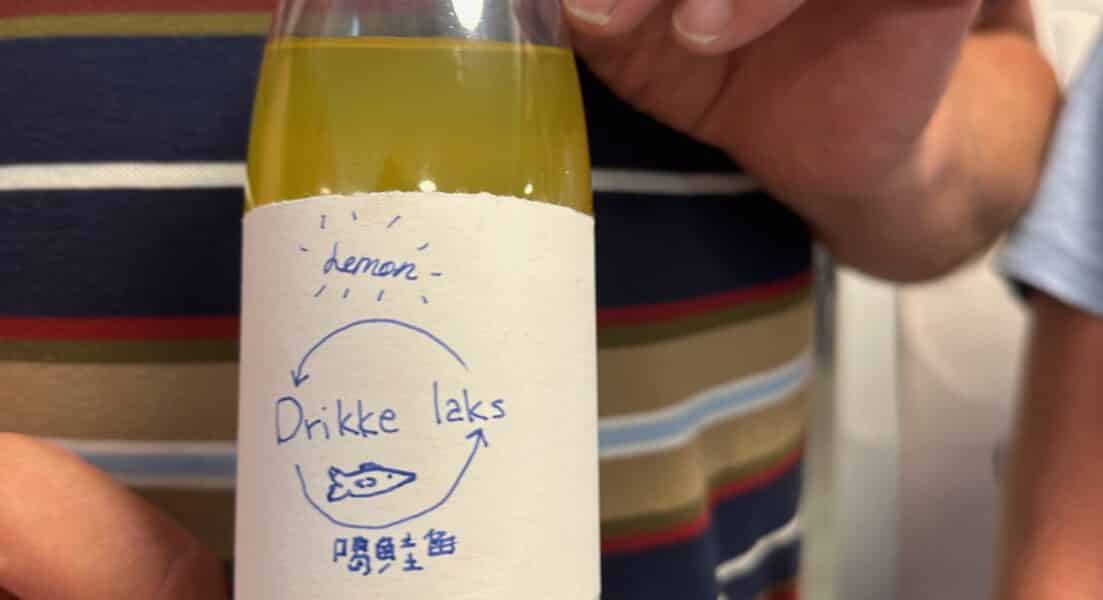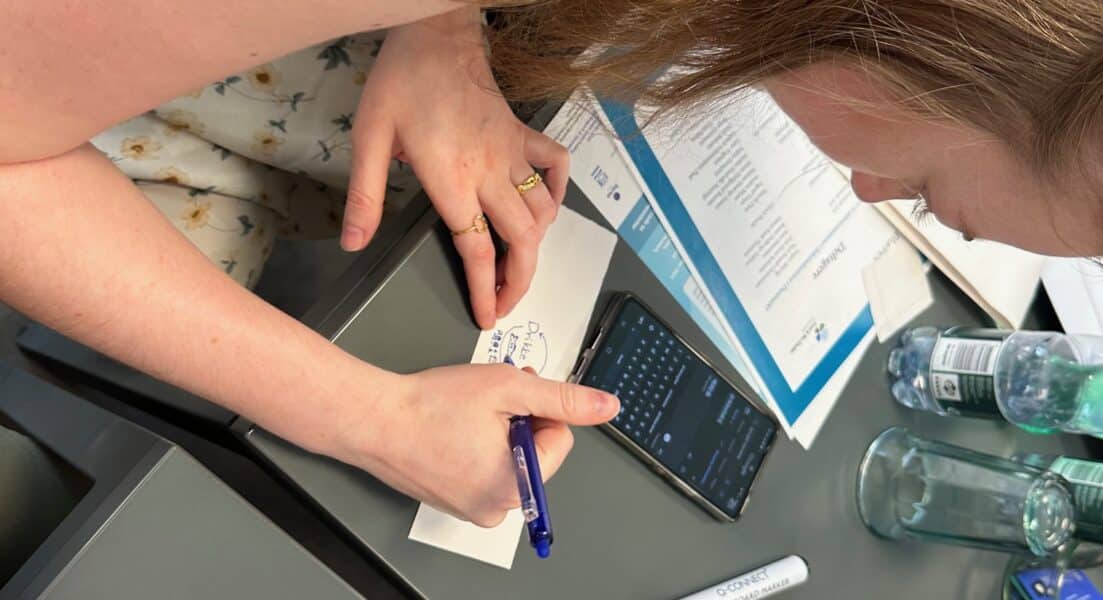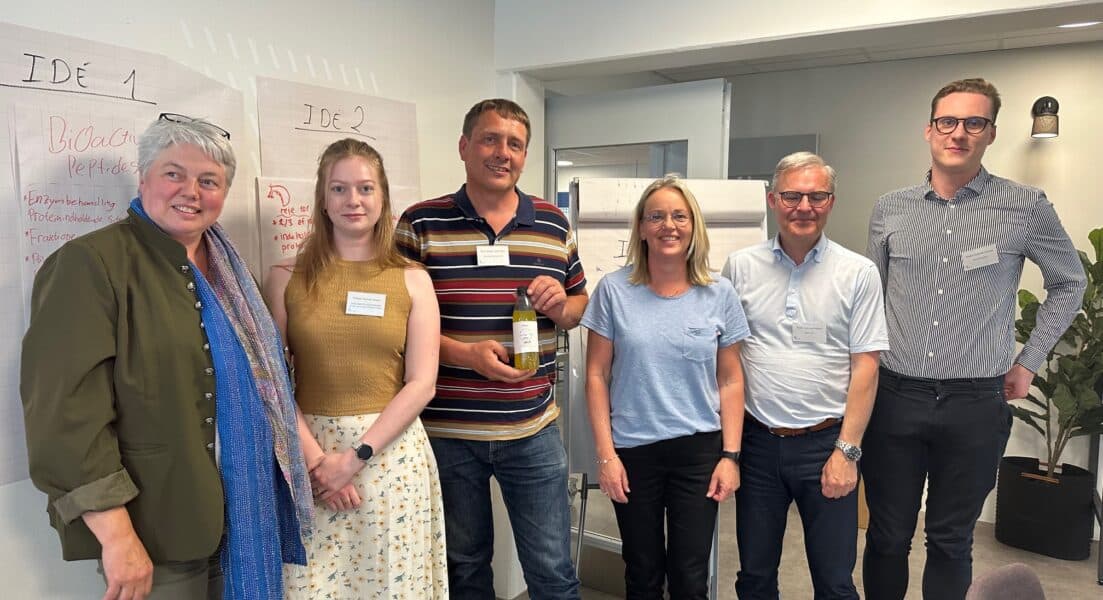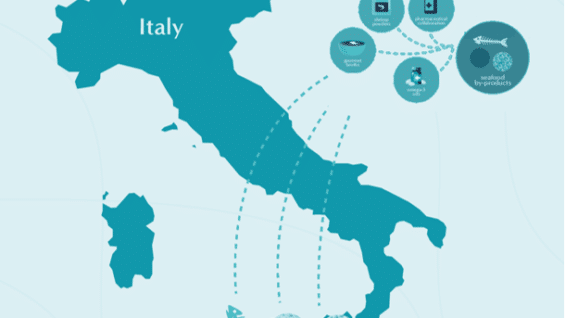UiA’s Leadership in WP4: Developing Sustainable Business Models for the BlueRev Bioeconomy
The University of Agder (UiA) led Work Package 4 (WP4), focusing on the development of sustainable business models within the BlueRev bioeconomy. By integrating Design Thinking (DT) with the Sustainable Business Model Canvas (SBMC), UiA facilitated the creation of actionable and context-sensitive business models tailored to regional challenges. These methodologies empowered stakeholders to collaboratively design innovative, practical and sustainable solutions, contributing to broader systemic sustainability transitions. The best practice models in each pilot region were identified as the result of emerging insights facilitated by the intersection of RDT and the SBMC.
Best Practice Business Models in Fish By-Product Valorization
Pilot regions in Denmark, Greenland, Estonia, and Sicily showcased innovative approaches to fish by-product utilization, highlighting the potential for sustainable economic growth.
Denmark: Omega-3 Enriched Functional Beverage
- Innovation: Development of a nutritional Omega-3 drink targeting the Chinese market.
- Business Case: Inspired by the dairy industry’s diversification, this product transforms fish processing waste into a high-value, consumer-friendly beverage.
- Impact:
- Environmental: Supports the circular economy by repurposing fish waste.
- Social: Creates local jobs in fish processing and sustainable production.
- Health: Promotes Omega-3 consumption, benefiting children, the elderly, and health-conscious consumers.
- Cultural: Aligns with traditional dietary habits, ensuring market acceptance.
Greenland: Transforming Fish Waste into Pet Food
- Innovation: Small producers convert fish waste into high-value dog food.
- Business Case: Inspired by successful models in the Faroe Islands, where fish waste is processed into high-value ingredients like peptides, collagen, oil, and proteins.
- Impact:
- Environmental: Reduces waste production, supporting circular economy principles.
- Social: Empowers local communities to adopt sustainable practices, addressing the issue of 45,000 tons of unprocessed fish waste annually.
Estonia: Utilizing Red Algae for Nutraceutical & Cosmetic Applications
- Innovation: Leveraging Furcellaria lumbricalis to develop high-value products for cosmetics, nutraceuticals, and bioplastics.
- Business Case: Red algae, historically used as a food gelling agent, is now being repurposed into bio-based materials, including microcellulose, biofertilizers, and cosmetic ingredients.
- Impact:
- Environmental:
- Promotes full resource utilization, reducing waste.
- Requires no agricultural land, irrigation, or fertilizers, ensuring a low ecological footprint.
- Social:
- Creates jobs in harvesting, processing, and product innovation.
- Preserves cultural heritage, as red algae harvesting is a traditional practice in coastal communities.
- Environmental:
Sicily: Sustainable Valorization of By-Catch – The Ritunnu Case
- Innovation: Reviving and commercializing ritunnu salatu, a traditional Mediterranean fish product made from menola (Spicara smaris).
- Business Case: Led by local fisherman Natale Amoroso and the University of Palermo (UNIPA), technological innovations have standardized and improved the product’s quality and market value.
- Impact:
- Environmental: Reduces food waste and promotes the sustainable use of non-target fish species, supporting SDG 12.
- Social:
- Supports local fishers and creates new job opportunities.
- Preserves cultural heritage, strengthening Sicily’s seafood traditions.
Conclusion
Each of these models demonstrates how sustainability and market potential can align, fostering innovation, circular economy initiatives, and social impact in the BlueRev bioeconomy.









